
|
The Five Classes of
Vertebrates
First posted June 12, 2004 Last updated November 20, 2009

 |
 |
 |
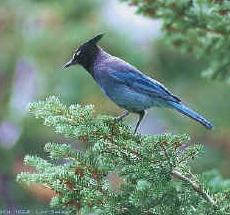 |
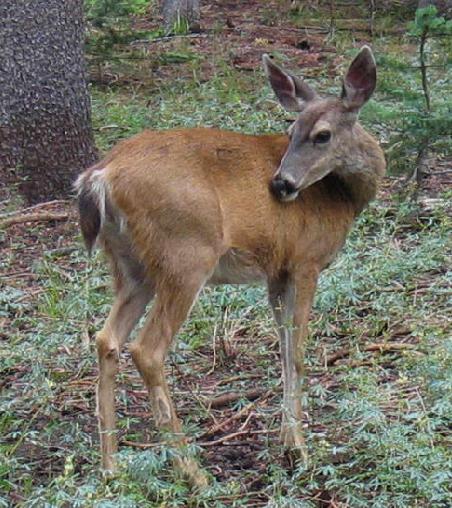 |
|
fish |
amphibians |
reptiles |
birds |
mammals |
Everyone loves animals, and
almost all the animals you know are vertebrates.

| Can you name some animals? Write
down a list of as many animals as you can. If
you look over this list, probably all of the animals
that you have named have bones, with a series
of large bones in their backs that helps them
to move (run, climb, fly, swim). This is called
their backbone or vertebral column. All animals
with a backbone are called vertebrates. Do you
have a backbone? Then you are a vertebrate, too!
Vertebrates make up most of the "animals"
that we are familiar with. Exceptions to this
would be things like an insect, an octopus, a
lobster or crab, a jellyfish, or a clam. Most
everything else is a vertebrate, with a backbone
and other bones.
Vertebrates can be classified into five groups,
based on their skin covering, how they reproduce,
how they maintain body temperature, and characteristics
of their limbs (arms and legs, or their equivalent
such as wings or fins). Knowing the five classes
of vertebrates and their characteristics helps you
to understand more about these animals. |

The five classes of
vertebrates are listed below.
You probably know all of the characteristics
that are in bold. If you know this
much, you know enough to classify any animal you see!
Learn these characteristics if you don't already know
them. Just think of your favorite example and the characteristics
become very easy to remember. The other information
gives you more characteristics that scientists use to
classify animals into their respective class.
Fish |

Coho Salmon |
| |
|
1. Fish are ectothermic,
aquatic vertebrates.
2. Their skin is generally covered with scales.
3. Their limbs are modified into fins
for swimming.
4. They breathe with gills.
5. They lay eggs that must be
in water.
|
| You probably knew most of this already,
didn't you? The term "ectothermic"
may be new to you. It
means "external temperature" in Latin.
The simpler term is "cold-blooded", that
is, it has a body temperature equal to the surrounding
environment. You know that fish are cold-blooded
if you ever picked one up: they are as cold as the
water they were swimming in. Even if you go swimming
and are shivering with cold, you are always warmer
than the water. "Aquatic" means that they
spend their lives in the water. |
| The most prominent fish at Cazadero
is a visitor during the winter rains: the Coho salmon.
A federally threatened
species, this ocean-dwelling fish comes up Austin
Creek when the winter rains raise the water level,
to spawn (lay eggs) in the gravel beds that are
so typical of the redwood creeks. Note that the
eggs are laid in the water, not on land (reptiles
and birds lay eggs on dry land). |
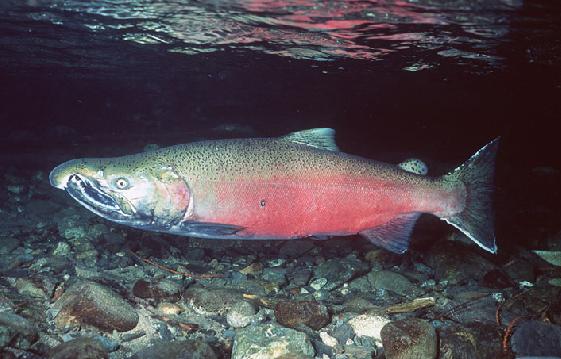 |
|

|
|
The eggs drift down into the gravel, where they
are protected. The eggs at the left are Coho salmon
eggs, and they show the developing embryo, and you
can see the eye of the baby fish. |
| |
|
A salmon is a fish because it is
ectothermic (cold-blooded), lives in the water,
breathes with gills, lays eggs in water, and has
fins and scales. |

|

Pacific Treefrog |
| |
1. Amphibians are ectothermic
vertebrates.
2. Their skin lacks scales, hair,
and feathers, and is either smooth (like a frog)
or rough (like a toad). They are dependent upon
moisture and subject to desiccation; their skin
must remain moist to aid in breathing.
3. They lay eggs in water, which
hatch into an intermediate life form (tadpole
or larva) that usually breathes with gills, and
change into the adult form that breathes
air and can live outside water.
4. They have three-chambered hearts.
5. They lack claws on their toes.
|
You already knew all the facts
that are in bold, didn't you? Let's think of the
various kinds of amphibians that Cazadero has,
and you can probably figure out all the characteristics
of the class. The frog at the top is the Pacific
treefrog, one of the most famous frogs in the
world. Do you know why? It is the frog heard round
the world! Most Hollywood movies have used the
croaking of Pacific treefrogs when they want frog
noises, because they are champion croakers. They
are treefrogs, so they do not spend much of their
time in water, but are found in trees.
The toad (below, left) is the Western Toad, which
you can find in the thousands down by Austin Creek
in later summer when they have hatched out from
their tadpole stage. The amphibian (below, right)
is the California Newt. Newts are like salamanders,
but they have the rougher, dryer skin like a toad.
Frogs are like salamanders, and toads are like
newts. They all have moist skins, through which
they can breathe (they also have lungs for breathing).The
salamander at the bottom is the California Slender
Salamander, which is about 3 inches long but only
1/4 inch wide.
The name "amphibian" comes from the
Latin for "two lives", which refers
to the fact that all amphibians have a larval
stage (we call the larval stage of frogs and toads
a "tadpole" or "pollywog")
and an adult stage. This is unique in the vertebrate
world, because fish, reptiles, birds, and mammals
are all born as small versions of the adult, not
a completely different form. This dual life, one
aquatic with gills and one terrestrial with lungs,
may be representative of the evolution of animals
out of water and onto dry land.
Now, lets look at the characteristics of the
class amphibian. You already knew that frogs were
cold-blooded if you ever picked one up. You also
knew that tadpoles hatched into frogs, and that
frogs do not have feathers, scales, or hair ("fine
as frog fur" is a famous phrase), and that
their skin was moist. You probably already knew
that frogs lay eggs. So you are already an expert
on what makes an amphibian an amphibian! The other
characteristics may be fun to know, but you can
classify an animal as an amphibian just by what
you already know.
|
|
|
| 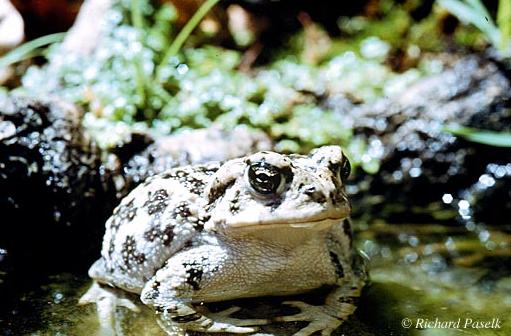
|
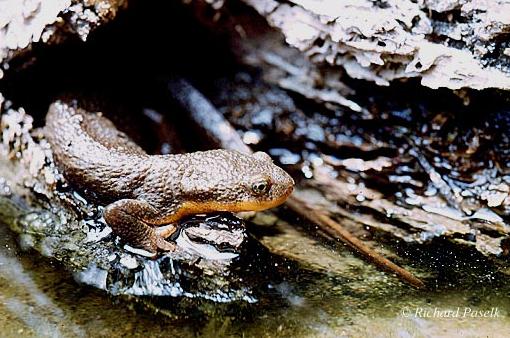 |
| |
|
|
| Frogs, toads, salamanders, and newts
are all amphibians because they are cold-blooded,
have no scales, hair, or feathers, their skin is
moist, they lay eggs in water, and their life cycle
has two stages, the "pollywog" or larval
stage and the adult stage. |

1. Reptiles are ectothermic
vertebrates.
2. Their skin has scales, but no hair or
feathers.
3. They have three-chambered hearts (except for
alligators and crocodiles, which have four-chambered
hearts).
4. They have claws on their toes (except those which
do not have legs, such as legless lizards).
5. They are the first animals, in evolution, to
develop the amniotic egg. This allows reptiles to
lay eggs on land. |
|
|
You already knew all the facts
that are in bold, didn't you?
Let's think of the various kinds of reptiles at
Cazadero, and review what we already know about
them.
|
The most common reptile that you can find at
Cazadero is the alligator lizard, usually crawling
though the leaves and debris on the ground,
looking for invertebrates to munch and lunch
on. You may also see garter snakes along the
creek side, blue belly lizards sunning themselves
on rocks or logs, or the rare turtle in the
creek.
What do all these reptiles have in common?
They all are cold-blooded (the reason lizards
and snakes sun themselves is to warm up, just
like you on a cold morning, or after a wade
in Austin Creek) and they have scales. Did you
ever see a lizard with feathers, or a hairy
snake? No! Scales make up their only covering.
Reptiles also lay eggs on dry land. You have
heard of turtle eggs, right? Nature shows often
have programs on sea turtles and how they lay
their eggs on the beach. You may have seen some
nature programs on alligators, another kind
of reptile but not one we have, laying eggs
in piles of rotting vegetation. All reptiles
lay eggs. We know now that birds evolved from
reptiles, and one of their linkages is the fact
that they both lay hard-shelled eggs on dry
land. Amphibian eggs, in comparison, are soft
and must be laid in water.
|
 (Photo by DLNelson, at camp, 2008)
(Photo by DLNelson, at camp, 2008) |
|
|
|
Snakes, turtles, and lizards are
all reptiles because they are cold-blooded, they
lay eggs on dry land, and are covered with scales,
never feathers or fur.
|

Birds |
 |
1. Birds are endothermic
vertebrates.
2. Their skin is covered with feathers.
3. They have four-chambered hearts.
4. Their bones are lightweight and usually hollow.
5. Their forelimbs are modified as wings.
6. They lay eggs. |
|
|
You already knew all the facts
that are in bold, didn't you?
Everyone knows birds have wings with feathers
and lay eggs. You may not have known they are
endothermic, which is Latin for "inside temperature".
This means that they can maintain their own warm
inside temperature, even when it is cold outside.
Frogs (amphibians) and snakes (reptiles) have
to hide when the weather is cold, but birds can
be out and active. Let's think of the various
kinds of birds at Cazadero, and think what we
already know about them.
|
The most common birds at Cazadero are blue
jays, both Scrub Jays and Steller's Jays (photo
above), robins (at right), as well as a variety
of aquatic birds such as ducks, mergansers,
and herons, which feed along Austin Creek.
The characteristics of the class Birds are
rather well-known and hardly need to be taught.
We all know that birds have wings, chickens
lay eggs, and that birds of a feather flock
together. The only character that you might
not have known is that they are warm-blooded,
unless you or a friend have a pet bird at home
or if you have held a chicken. Birds in general
have a higher body temperature than we do, so
they feel quite warm when we hold them. Their
feathers are well-adapted to hold this heat
in, which is why we make comforters out of down.
|
|
|
|
|
Jays, robins, and ducks are all
birds because they are warm-blooded, have feathers,
wings, and lay eggs.
|

Mammals |
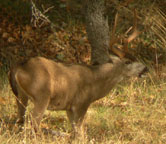
(Photo by DLNelson, November 9, 2009, but not at camp) |
1. Mammals are endothermic
vertebrates.
2. They have hair, which varies
greatly among species.
3. Most have sudoriferus (sweat) glands.
4. They have mammary (milk-secreting) glands.
5. They have sebaceous (fat-secreting) glands.
6. They have heterodont dentition (different types
of teeth).
|
| |
|
|
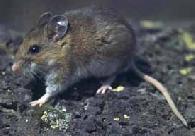 |
|
| |
Cazadero has a lot of
mammals, but they tend to live elsewhere and only
move through the Redwood Forest. There is not much
in the way of natural food in the redwoods, but
camp provides a lot of human food, so raccoons and
mice are frequent guests. The opossum and deer might
wander along Austin Creek.
|
| Deer, mice, opossums,
raccoons, and humans are mammals because they are
warm-blooded, have hair, and nourish their young
on milk. |

How about a test of your knowledge? This
will also show you the usefulness of knowing the classification
of vertebrates.
Animal One
You come to a strange island and the islanders tell
you about a strange creature that has a backbone. They
say it flies around with two wings. What is your first
guess? You would probably say a bird. But they tell
you it does not lay eggs. Could not possibly be a bird.
It has fur. Can you now guess? Answer
here.
Animal Two
You are also told about an animal with a backbone that
is now extinct, but the elders remember that it ran
around on the ground and couldn't fly like a bird. But
it laid eggs. What is your first guess? You would probably
say a reptile, like a lizard. But they tell you it did
not have scales, but feathers. Can you guess what it
must be? Answer
here.
Animal Three
You are also told about an animal with a backbone with
no legs that lays eggs, but is definitely not a snake.
What is your first guess? You would probably say a fish.
However, this strange creature lives on land, has scales,
and lays eggs on the dry land.
Answer here.
Animal Four
The islanders also tell you about an animal that lives
its whole life in the water and has gills. What is your
first guess? You are wrong! It is not a fish! They tell
you that it lays eggs in the water, does not have a
larval stage but is born as a small version of an adult
of the species. Guess again? It can't be an amphibian,
as it does not have a larval stage. Reptile? No, it
has gills. Reptiles breathe with lungs. Mystified? Carefully
check the description and click here.
Animal Five
The final animal that you are told about is rather strange,
indeed. It has a backbone, swims in the water and lays
eggs. What is your first guess? You might think that
it is a fish or an amphibian, or even a reptile or bird.
They all lay eggs and some of each group swims. You
really can't guess yet. They tell you it has claws and
a bill like a duck. You might think it is a bird. Then
they tell you it has no feathers. That rules out a bird.
What's left? A fish, an amphibian, or a reptile, but
this is strange. A fish with a bill like a duck? Then
they tell you it breathes air, and its eggs are laid
on the ground. That rules out what? A fish. Reptile?
But they tell you it is warm blooded, and nurses its
young with milk. Boy, you are in a quandary now! What
class would a vertebrate be in? Answer
here.

Reptilia's
webpage on teaching the five classes to
fifth graders is nice.
Smithsonian's
Vertebrate webpage is for fairly advanced
students.
The WebQuest
page on vertebrates is an interactive learning tool
and quite nice.

Acknowledgements
The photo of Coho eggs is from a newsletter
of Kalles Junior High.
The Western Toad and California Newt
are from Richard
Paslek's webpage on the
Humbolt State University website (interestingly, in
the Chemistry Department's section!). The California
Slender Salamander photograph was taken by
Jason Lowe.
The garter snake photo is from Gerry
M. Serianni's webpage on his geneology.
The Steller's Jay and robin are from
a webpage
on insect-eating birds posted by the Federal government.
The deer mouse, opossum, and Pallid bat are from the
Math/Science
website; this group is located in Fremont.
The dodo bird is from the WebQuest
site, cited under References. The legless lizard is
from the Applied
Ecology Research Group: Fauna Notes.
|

|

